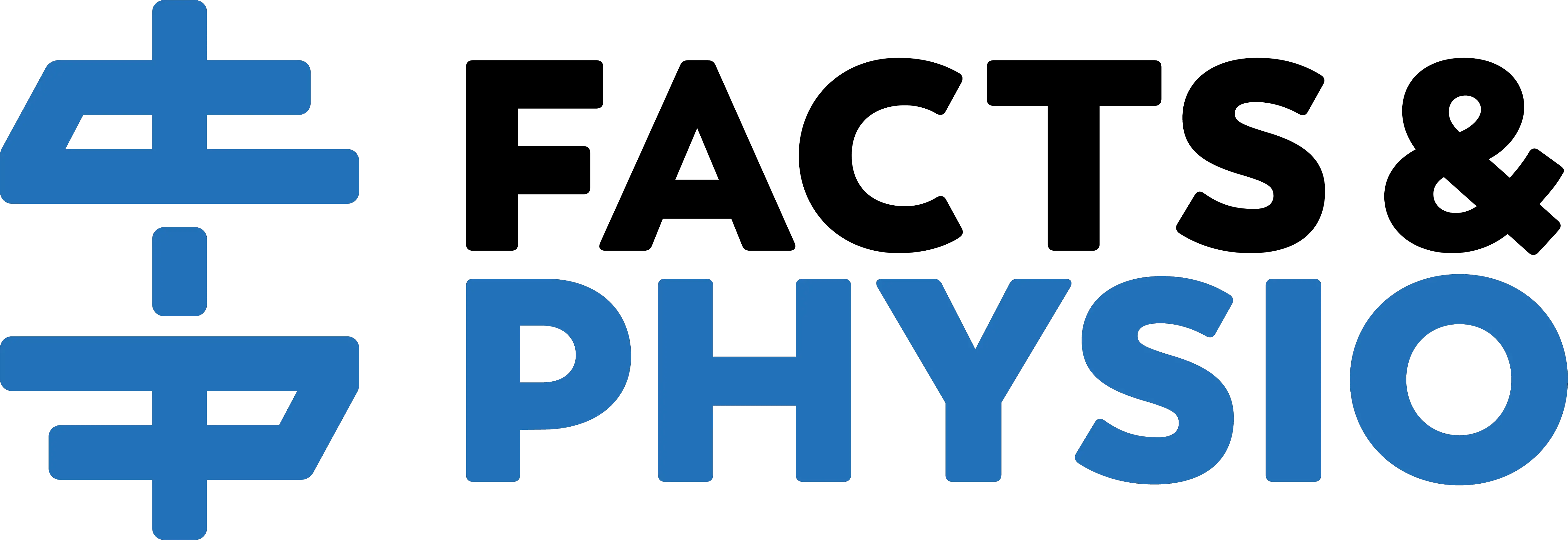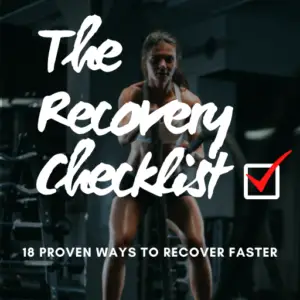Low back pain is a huge problem. It plagues 4 in 5 people. It’s usually impossible to identify the anatomic pain source. Back pain costs society more than depression, headaches and even heart disease.
And it’s resistant to many treatments. Worse, pervasive back pain myths hinder recovery. These myths scare patients and focus clinicians on the wrong treatments.
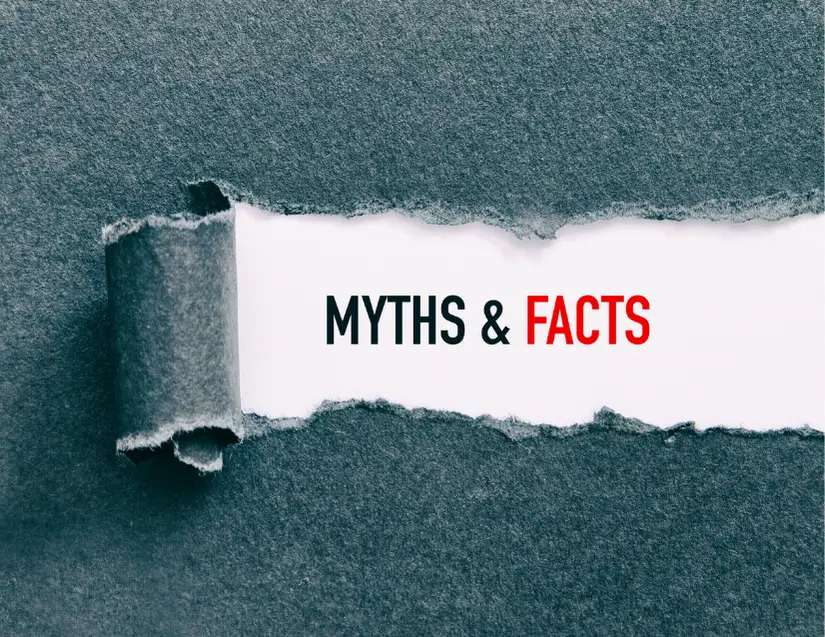
These 10 back pain myths need to be debunked.
1) Your Spine Needs Decompression
In theory, decompression therapy (aka lumbar traction) separates the lumbar vertebrae, relieving disc, joint and nerve compression. Sounds good, right?
Well, it’s not very effective. It rarely relieves low back pain (and sometimes makes it worse).
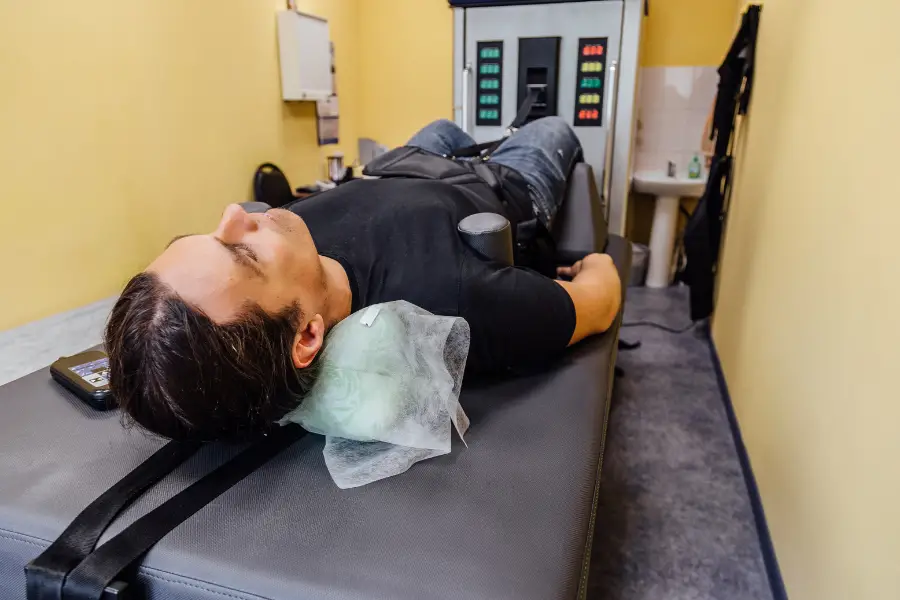
Current back pain guidelines recommend against lumbar decompression (George 2021). And prior studies support lumbar traction for just a tiny fraction of pinched nerve pain – patients with sciatica that peripheralizes (worsens) after repeated movement testing.
Active treatments, like McKenzie exercises and strength exercises, work better than decompression for low back pain relief.
To learn more about McKenzie exercises, check out this article and pick up a copy of Treat Your Own Back. It’s helped thousands of people (including myself) take control of persistent low back pain.
In my battle with chronic back pain, my trainers used spinal traction (contrary to research guidelines). As you might expect, it delayed my recovery. Relying on passive treatments – treatments done to you instead of by you – is one of the most common low back pain mistakes.
2) E-Stim and Ultrasound Accelerate Healing
Electrical stimulation and ultrasound are two more passive treatments that don’t work well.

Neither treatment provides long-term benefits. Subsequently, back pain treatment guidelines do not recommend e-stim or ultrasound (George 2021).
3) It’s Your Piriformis
Piriformis syndrome is rare. It occurs when a tight piriformis muscle pinches the sciatic nerve. That’s improbable for most people, since the sciatic nerve runs through the piriformis muscle in just 20% of the population (Chang 2021).
Piriformis syndrome causes deep butt pain and nerve pain into the affected leg. Of all low back pain and sciatica cases, piriformis syndrome accounts for just 0.3% to 6% (Hicks 2022). So it’s probably not your piriformis.
4) Your Hips are “Out”
The theory that hip misalignment causes pinched nerves in your back has little scientific support. It sounds feasible but there’s not much robust research to back it up.
What does the research say? Pelvic asymmetries are normal. And any relationship between asymmetry and back pain is weak, at best (Yu 2020).
One study found that 95% of pain-free college athletes have pelvic asymmetry – one hip rotated forward relative to the other one (Krawiec 2003). Most of the study participants had leg length differences as well. Yet, they didn’t have pain.
Misaligned hips rarely cause back pain. And treating these asymmetries – real or perceived – often forces patients to depend on a clinician to “fix them.” This can hinder patient confidence and self-efficacy, two key ingredients to a successful rehab.
5) Your Spine is Out of Alignment
Scoliosis is normal. Pain-free adults have significant scoliosis (10 degrees or more) 13.4% of the time (Chen 2016).

There’s little evidence that your spine can move “out of alignment,” barring a significant trauma. Even if the spine could “sublux”, clinicians can’t reliably palpate spine position, according to this systematic review in a chiropractic journal.
Furthermore, high-definition imaging (X-Rays, MRIs) usually can’t identify the source of low back pain. And imaging can actually delay recovery from low back pain.
This myth has so many holes: Spinal asymmetry isn’t well-correlated to pain. There’s little evidence the spine goes “out of alignment.” And if it did, physicians, PTs and chiropractors can’t tell by palpation. Even high-resolution imaging can’t identify the source of back pain in most cases!
6) You Need an MRI
This one’s tricky. An MRI is sometimes indicated for low back pain. However, most low back pain cases don’t require imaging.
In fact, getting an MRI in the first 30 days is linked to worse outcomes. Not to mention much higher treatment costs (Webster 2013).
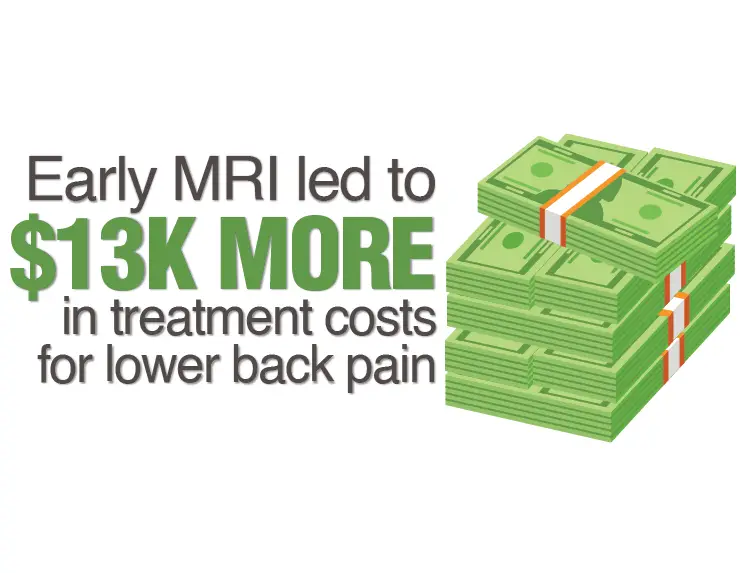
An MRI may be warranted if sciatica symptoms don’t improve after 6 weeks of conservative treatment (i.e. physical therapy) or if symptoms progressively worsen. Your PT and physician will also screen you for “red flag” signs that indicate the need for imaging.
7) Herniated Discs Require Surgery
Herniated discs require surgery in rare cases. More often, they heal with conservative treatment. And the worse they are, the faster they heal (Djuric 2020).

Herniated and bulging discs frequently show up on imaging of pain-free individuals. These factors prompted me to write the post Why Bulging Discs Are No Big Deal (Usually). Check it out for more insights on disc problems and low back pain.
8) Static Stretching Prevents Back Pain
General stretching isn’t proven to prevent injury. It’s just one reason static stretching is overrated. However, McKenzie extension exercises reduce the risk of low back pain in military personnel and healthcare workers. (Larsen 2002, Matsudaira 2013).
Learn more about McKenzie exercises in this article or grab up a copy of Treat Your Own Back.
9) Your Core is Just Weak
Core weakness is poorly correlated to low back pain (Lederman 2010). It can play a role in back pain. But core stabilization drills aren’t necessarily the best back pain treatment.

Research shows deadlifts for back pain and McKenzie exercises typically work better than core stabilization drills. Building core strength may help during back pain rehabilitation, but it’s not very helpful until pain levels are low to moderate (Alrwaily 2016).
10) You Should Rest if Your Back Hurts
Back pain is not a free pass to stay in bed and do nothing. Being sedentary is one of the most common back pain treatment mistakes.

The best approach for acute back pain is staying active and starting PT early (Fritz 2015).
Readers: Which of these back pain myths have you heard? Which ones surprised you? Share your thoughts in the comments.
For more evidence-based insights you won’t find anywhere else, join the free Facts & Physio Newsletter. Plus, get The Recovery Checklist when you sign up.
